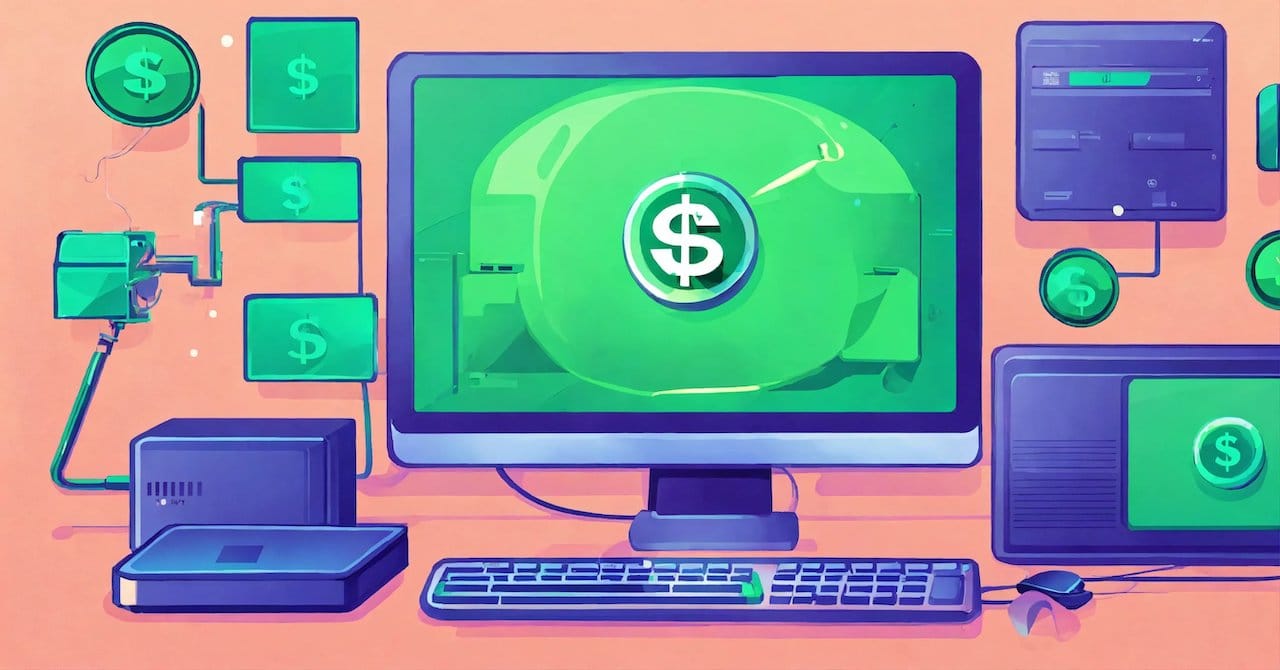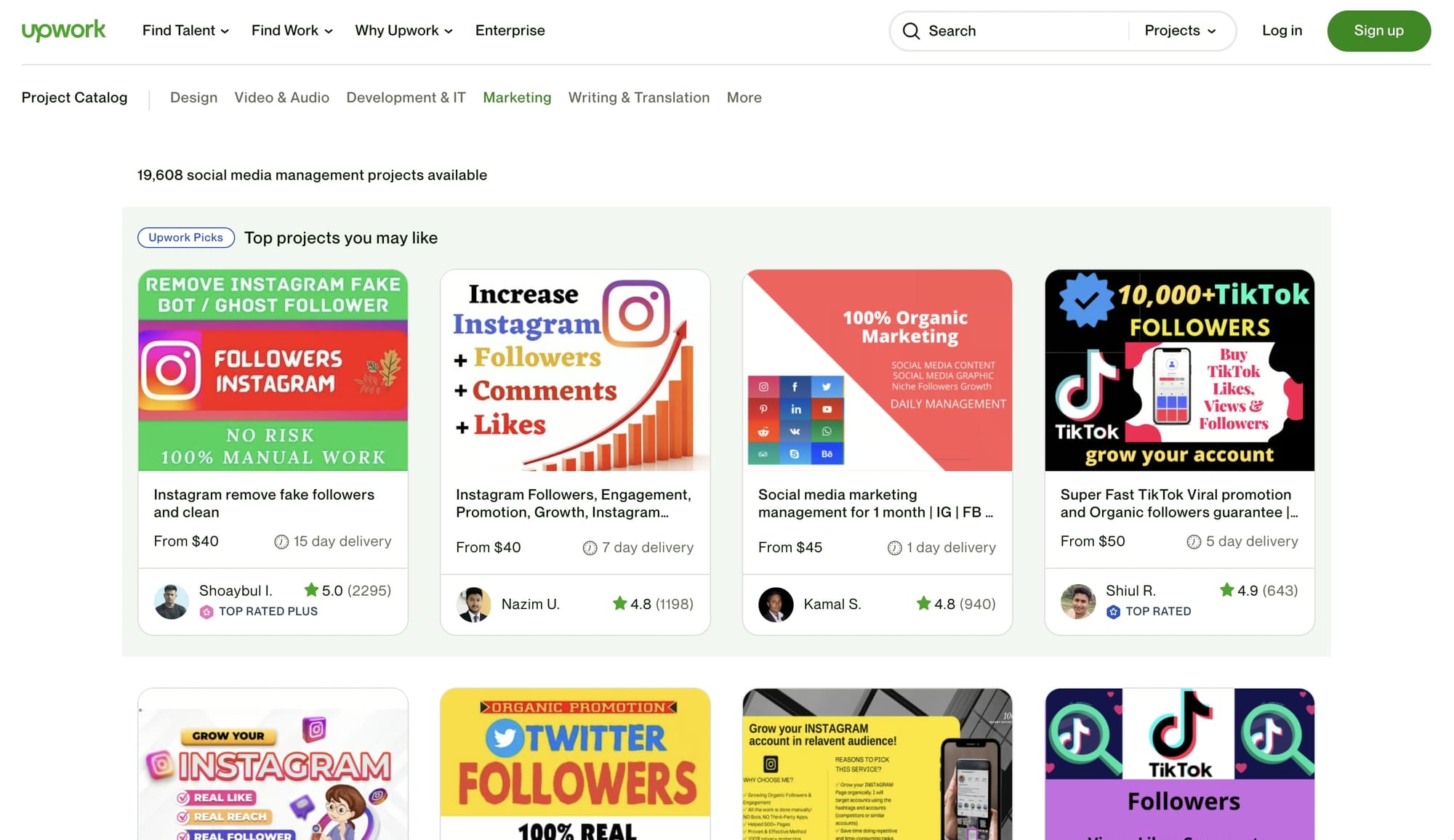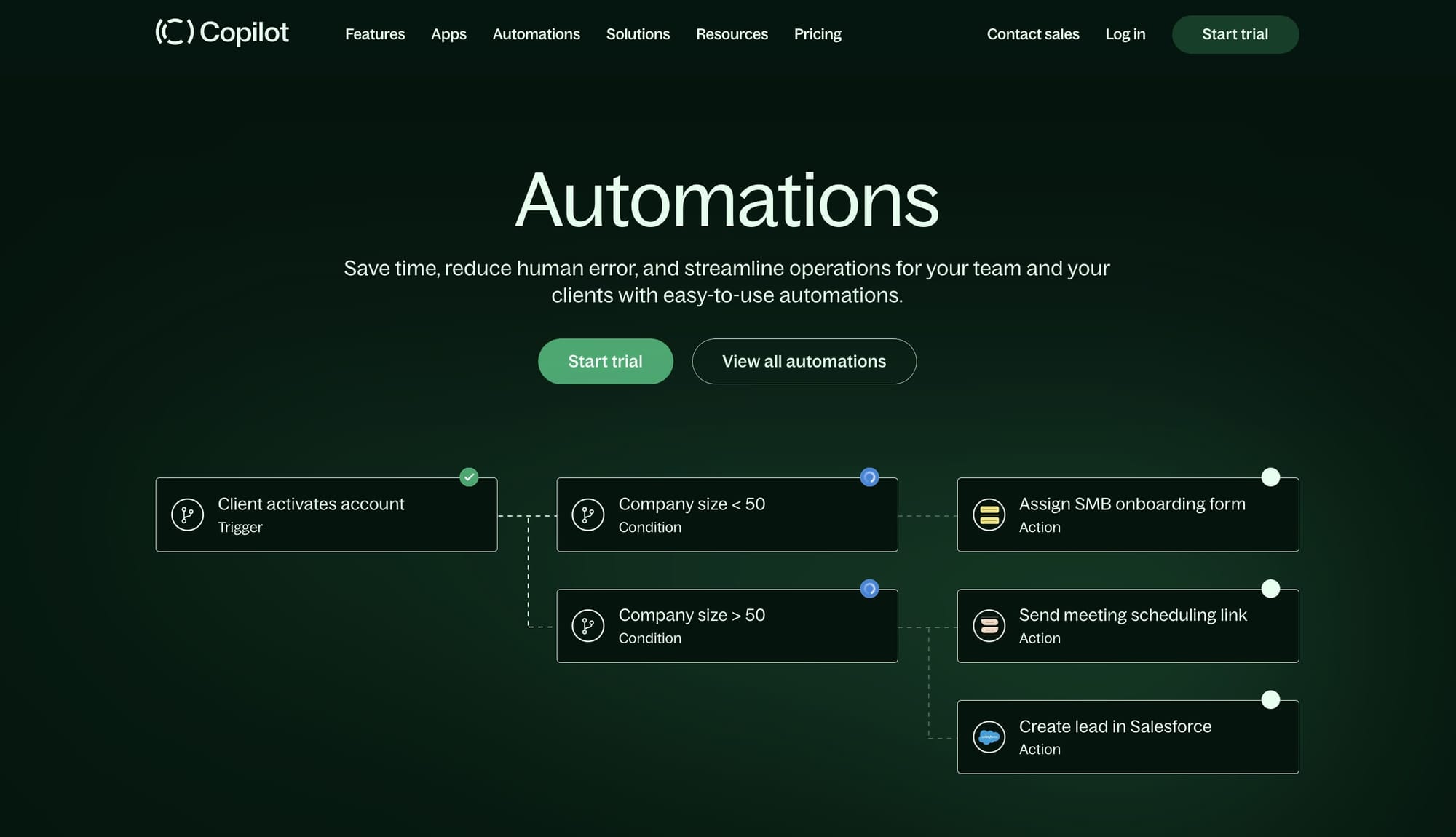How to start a drop servicing business (in 8 steps)
In this article, I'll show you how to start a drop servicing business in just eight steps. Sign clients, productize services, and build a brand.

Over seven years ago I decided I wanted to start a business. And one of the first things I ever did was start an ecommerce store — dropshipping products like watches and t-shirts.
But there was a lot of overhead, and dealing with customer support started to become a pain. It wasn’t until a couple of years ago that I heard the term “drop serving” for the first time. And I realized it was a lot better to focus on higher-ticket services, rather than selling products I didn’t really care that much about.
So, I started a marketing agency after working in marketing for six years. And over time, I realized that I could outsource a lot of the work, if not all of it, to third parties.
My mind was blown, and I’m so glad I came across the concept of drop serving. So, in this article, I want to go over how you can go about starting a drop servicing business for yourself.
Grab a cup of your favorite drink, this is about to get interesting.
What is drop servicing?
Drop servicing is a business model where entrepreneurs sell services, often digital marketing, graphic design, SEO, or copywriting, without performing the work themselves. Instead, they act as a middleman, outsourcing these tasks to freelancers or agencies found on platforms like Fiverr, Upwork, or niche white-label service providers. This model enables individuals to offer a range of professional services, capitalizing on their skills in sales and client management rather than the service itself.
Difference between drop shipping and drop servicing
Although both drop shipping and drop servicing operate on the principle of outsourcing, their domains differ significantly.
Drop shipping is quite common in the ecommerce world, where a store sells physical products without keeping inventory, passing the order to a third party to fulfill and ship directly to its customer. It's a retail fulfillment method where the seller doesn't see or handle the product.
On the other hand, drop servicing deals with the sale of services rather than physical goods. Entrepreneurs in drop servicing leverage their expertise in areas like digital marketing or social media management to secure clients. Once they land a contract, they outsource the actual service work to other professionals. This allows individuals to start a scalable online business without being experts in the services they offer.
Both models attract entrepreneurs and startups due to their low upfront investment and the potential for high returns. They share the commonality of being heavily reliant on outsourcing when it comes to fulfillment, making them attractive to business owners who want to run lean and gain more time freedom. However, the key difference lies in the nature of the product — tangible goods for drop shipping and intangible services for drop servicing.
How to start a drop servicing agency in 8 steps
Here are my 8 steps to starting a drop servicing business:
- Find your niche
- Sign your first client
- Do the work yourself (first)
- Productize your services
- Create a real business structure
- Find white-label service providers to outsource work
- Hire an assistant to manage operations
- Build a loyal brand to retain and attract clients
Okay, let’s go through each step in more detail.
1. Find your niche
When starting a drop servicing business, the first important step is picking your drop service niche — the specific area you will sell services in. You want to choose something that people are willing to pay for and that you know how to market and talk to potential clients about.
Think about services that you can outsource, or hire other companies to do, that are still high quality. For example, if you know about websites, you could sell WordPress or Webflow site building services. These are popular to drop service since there are a lot of freelance web designers that can help you build these sites.
Another good option is logo design. Companies always need unique and professional logos, and there are many talented graphic designers you can outsource the actual design work to.
Here are some popular online services to help you gain drop servicing ideas:
- Email marketing setup
- Content writing
- Website development
- Shopify development
- Video editing
- Social media marketing
- SEO (search engine optimization)
- Transcription
- Link building
- Local business lead generation
These are just the tip of the iceberg. Upwork has a solid article you should check out if you want to gain some inspiration for more business ideas.

The key is choosing something where you can make sure the outsourced work is high quality. Your success will depend on consistently giving great service that keeps your clients happy. Whether it's websites, graphic design, marketing, or something else, pick your niche based on demand, your understanding of the space, and your ability to reliably provide excellent work through your partners.
2. Sign your first client
Getting your first customer when you start a drop servicing business can be very hard but also very important. It's difficult because you don't have examples of your work or past successes to show potential customers. So you have to convince them to trust you without that proof (unless you can get reputable people to vouch for you).
When I started my marketing company, I got my first client by sending a very personalized email showing them exactly what they needed to do to get their website to rank better on Google (and didn’t ask for anything in return). I did this with multiple companies, researching each one carefully to understand where they stood in the market. Then, I wrote emails specifically about how I could help with those needs. This type of attention made me stand out from other generic messages.
Once you get that first big client, you have to focus on doing really great work for them. Quality and keeping your customers happy is key. It will lead to more business growth because happy customers will recommend you to others. As Brian Balfour from Reforge would say, “retention breeds acquisition, not the other way around.”
You can also use social media to showcase your work and abilities. Platforms like LinkedIn, Instagram, or industry-specific forums are great for displaying your successes. That can help you get more clients.
So while getting started is hard without proof of your services, personalized outreach and delivering excellent work can help you land your first client. And that first customer is an important step in building your drop servicing business. Every big business starts small at the beginning!
3. Do the work yourself (first)
When starting your drop servicing business, it's important to do the work yourself at first. This will help you set up a solid foundation before you expand.
Doing the work gives you direct experience with what's involved. You'll understand the details, time, and resources needed to deliver quality results to clients. You'll also see possible issues that may come up and how to handle them.
You also want to do the work yourself in the beginning of client interactions so it shows clients you are truly committed and in control of providing a good service. This builds trust, which is really important when you're just starting out and want people to see you positively.
Additionally, you can improve how your business runs. As you work directly with clients, you'll spot places to be more efficient, better manage projects, and communicate clearly. This will be super helpful later on when you grow and outsource tasks.
Lastly, the experience helps you know what skills to look for when hiring freelancers later. You'll know exactly what expertise, professionalism, and work ethic you want on your team. You’ll also be able to document your process and train someone to do it for you (this is assuming there are no white-label agencies in your niche that can help you).
So while challenging at first, doing the actual work when launching your drop servicing gives you key insights on quality, clients, and operations that will pay off as you expand. It lays the groundwork for future success!
Once you start to get a good idea of your workflow and what types of services work well, it’s time to productize your services so you can scale efficiently.
4. Productize your services
Turning your services into set products is an important move for a successful drop servicing business. This means packaging what you offer into defined options with clear prices, details on what's included, and what the client will get. This standardized approach works better than custom solutions for each client.
We wrote a separate blog post that goes more in-depth on how to productize your services, but let’s go over some key points from that article.
First, identify the core services that could work as standard offerings without heavy customization. For example, you could create set graphic design packages or SEO optimization plans. The goal is services that are easy to buy, understand, and deliver consistently. This simplifies operations for you and maintains quality when outsourcing work.

Check out some examples of real productized businesses to gain some inspiration.
Next, set clear details for each service package: what's included, the price, and the timeline. This transparency attracts clients and sets expectations to prevent confusion down the line.
As the articles highlight, productized services are much more scalable. Having predefined offerings means you can take on more clients without getting overwhelmed operationally. It also allows for easier automation and delegation if you grow.
Also, standardized services make marketing and sales smoother. With clear packages targeting client needs, communication and demonstrating value is easier. Pair this up with a client portal and productized service platform, and your drop servicing business will feel like your clients are simply purchasing a plan from a SaaS (software as a service) provider!
Once you have your packages and start running the operations of your company, it’s time to create a real business. Depending on the industry you work in, you might need special licensing and you should probably create a real business before you even reach out to your first potential client. Please consult a local expert for this part, because laws differ based on location and services.
5. Create a real business structure
Making your drop servicing into an official business is key for protecting yourself and looking professional. This means transitioning from an informal operation to a legally recognized company. (Again, please consult with a legal professional before even selling to your first client.)
Having a real business status not only makes you look more legitimate but also helps you manage financial and legal things more effectively.
In the US, there are a few options for an official structure, including sole proprietorship, partnership, LLC, and corporation. Each has pros and cons for taxes, liability if issues come up, and your control over the business.
Many drop servicing entrepreneurs form an LLC (Limited Liability Company). This shelters your personal assets if the business has debt or gets into legal trouble. Also, taxes are more flexible — profits and losses pass through to your income directly instead of getting corporate tax rates (depending on how you structure things with your CPA).
However, the ideal structure depends on your specific situation, goals, and size. Please consult with a legal professional on this matter. But, here are some steps in the process:
- Assess what you need based on factors like if you have partners, liability concerns, taxes, and so on.
- Talk to a lawyer or advisor about the implications of each structure. They can explain compliance requirements, paperwork, taxes, and more.
- Choose a structure, then register your business with state/local authorities by filing forms and paying fees.
- Obtain any licenses or permits you legally need to operate your services.
- Open a dedicated business bank account to keep personal and business money separate. This makes record keeping and taxes easier.
- Understand tax obligations you'll have and be ready to comply — like income tax, self-employment tax, state taxes, etc.
Making it formal isn't just legal stuff! It helps you build a sustainable model, appear credible, and sets up success long-term.
6. Find white-label service providers to outsource work
The drop servicing model involves outsourcing work to other providers who do the tasks under your business name. This lets you scale up without sacrificing quality for your clients.

Choosing the right partners to outsource to is very important. They need to match your niche, quality standards, and reliably deliver good work. Here is how to find them:
- Research potential partners specializing in the services you plan to offer, like digital marketing, graphic design, etc. Google something like “[your service] white label”.
- Review examples of their past work to ensure it meets your quality standards.
- Discuss collaboration terms — pricing, timelines, policies, confidentiality agreements.
- Test them out on a small project first to check work quality, communication skills, and reliability before fully committing.
- Build a strong relationship through regular communication and feedback. This maintains consistent quality over time.
- Integrate them seamlessly into your systems and workflows so outsourcing is invisible to clients.
- Continuously check the quality of work to ensure high standards for clients.
The right partners allow you to focus on acquiring clients and managing the business. It enables scaling up efficiently without sacrificing the quality that clients receive under your brand. Maintaining rigorous standards for your partners' work is key for this model.
7. Hire an assistant to manage operations
As your drop servicing business expands, managing all the projects, clients, and tasks can become overwhelming. This is where bringing on an assistant to handle day-to-day operations is a game changer. This lets you focus on important big-picture things, like getting new clients and improving your services.
Here are some of the benefits of having an operations assistant:
- Streamlining Processes: They can help schedule, coordinate providers, meet deadlines, and smooth workflow.
- Client Communication: Assistants can field basic client questions, keep them updated on progress.
- Quality Control: They can do initial checks to ensure work meets standards before you do final approval.
- Invoicing and Payments: Assistants can send invoices, follow up, and maintain financial records.
- Time Management: With help on operations, you'll have more time for marketing, business development, and client relationships.
- Scalability: With tasks handled, you can take on more clients without quality or timeliness suffering.
- Problem-Solving: Assistants can be the first contact for minor issues, reducing disruptions to you.
- Feedback Collection: They can gather client feedback to improve offerings.
Look for organized, communicative people with project management ability. They should understand and fit your drop servicing model. The right assistant becomes a partner in your success!
8. Build a loyal brand to retain and attract clients
Establishing a strong, loyal brand is critical for the long-term success of your drop servicing business. A trusted brand not only helps retain existing clients but also attracts new ones through positive word-of-mouth and reputation. Building a brand that resonates with your target audience involves a combination of consistent quality, effective communication, and strategic marketing.
Here’s how you can build a brand that clients trust and feel loyal to:
- Deliver Consistent Quality: Make sure that every project you deliver is of high quality. Consistency in your service quality will help in building a reliable brand image.
- Engage with Your Audience: Regularly engage with your clients and audience on social media and other platforms. This helps in building relationships and shows that your brand values its clients.
- Share Client Success Stories: Showcase the success stories and testimonials of your satisfied clients. This not only builds credibility but also demonstrates the tangible results of your services.
- Create a Strong Visual Identity: Develop a cohesive visual brand identity, including logos, color schemes, and a consistent theme across your website and social media. A strong visual identity makes your brand easily recognizable and memorable.
- Offer Exceptional Customer Service: Providing excellent customer service can set your brand apart. Be responsive, solve issues promptly, and always be ready to go the extra mile for your clients.
- Content Marketing: Use content marketing to educate your audience about your services and industry trends. This positions your brand as a thought leader and a reliable source of information.
- Leverage Social Proof: Utilize client reviews, ratings, and endorsements as social proof to build trust with potential clients.
- Personal Branding: If you’re the face of your drop servicing business, invest in personal branding. Share your expertise, insights, and behind-the-scenes glimpses of your business to create a personal connection with your audience.
- Community Engagement: Participate in community events, webinars, or online forums related to your niche. This not only increases your brand’s visibility but also shows your commitment to the industry.
- Referral Programs: Implement referral programs that reward existing clients for bringing in new business. This not only helps in client retention but also in acquiring new clients through a trusted network.
Remember, building a brand takes time and consistent effort. Focus on what sets your drop servicing business apart and communicate that effectively to your target audience. A strong brand will not only help in retaining your current client base but will also attract new clients, aiding in the sustainable growth of your business.
Automate your drop servicing business with Assembly

In drop servicing, good service and efficiency are really important to succeed. That's why automation capabilities from tools like Assembly are so key for scaling up your business, especially if you focus on digital services. Assembly's platform makes running a profitable service business in high-demand areas easier.
Here are some of the key ways Assembly transforms drop servicing operations:
- Client management: Assembly centralizes communication, file sharing, project updates to simplify working with clients. This keeps clients informed and shows your commitment to quality service.
- Client onboarding & workflow automation: Save time on routine tasks by setting things up to run automatically, like welcome messages and default file structures for new clients.
- Client experience: The intuitive portal enhances client experience. Clients can easily check on projects, communicate, and access files — building confidence in your business.
- Digital services integration: Assembly seamlessly integrates various digital tools and services so you can keep using software you like for core work.
- Scalability: As your business and client base grows, Assembly scales up with you easily without impacting quality or efficiency.
- Analytics & profitability: Get detailed analytics to guide informed business decisions and understand profit drivers.
- Brand customization: Tailor the look and feel to match your brand, which looks professional and distinguishes your service.
- Secure & reliable: Assembly focuses on protecting your data and clients' data, giving all parties peace of mind.
Assembly isn't just another add-on to your tech stack. It bridges the gap between all of your tools, bringing everything into one central place. Think of it as your control center for your drop servicing business.
If you’re ready to start your journey, go ahead and play around with the Assembly demo portal!

